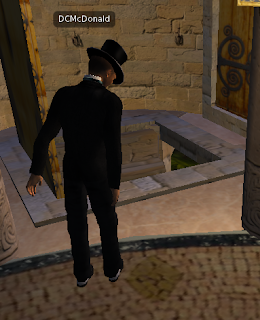 For those looking for an interesting twist on the everyday computer wallpaper chances are they have visited wallbase.net. Frequented by the wallpaper geek, Wallbase offers a collection of interesting, conversational, and just plain weird desktop wallpapers. The site appeals to all styles and categories. Ranging from celebrities to scenery and everything in-between, users can easily sift through multiple wallpapers at once, scrolling without a care, waiting for the one (or many) image(s) that appeal to the eye. There is no demographic or specific type of user. The site is meant to attract all, grabbing visuals from all interests.
For those looking for an interesting twist on the everyday computer wallpaper chances are they have visited wallbase.net. Frequented by the wallpaper geek, Wallbase offers a collection of interesting, conversational, and just plain weird desktop wallpapers. The site appeals to all styles and categories. Ranging from celebrities to scenery and everything in-between, users can easily sift through multiple wallpapers at once, scrolling without a care, waiting for the one (or many) image(s) that appeal to the eye. There is no demographic or specific type of user. The site is meant to attract all, grabbing visuals from all interests.The sites name is self explanatory, referring to it's literal counter part (a paint primer) the name gives easy recognition indicating the sites purpose...computer wallpapers. If the name doesn't give it away then the sites tagline verifies it. A simple but powerful tagline "We have wallpapers" indicates confidence, and assurance, confirming to users that they have arrived at the right place.
Wallbase is built as a search engine, users have the option to search for images using keywords or color, random or most popular. On the far left of the search box there are filter options. Visitors can choose to search by newest, or adjust their search to specifics so users can find exactly what they're looking for. The home page is clean, and appealing. Below the search field there is a preview of 21 top clicked pictures. These pictures can be clicked and viewed fully for download. Below the fold, are popular tags, recent activity on the sites conversation forums, and the front page also indicates how many users are online, and how many wallpapers are currently uploaded onto the site. Once visitors type in a keyword or choose a preset search option, they are brought to a viewing page. As users skim through images, the pages continues to extend as they scroll down, there is no page 1, 2, 3.....etc(unless adjusted in the settings), the page simply continues until there are no more results. If a photo of interest appears, once clicked it can be downloaded by right clicking or dragging the image into a folder. When viewing an individual photo, tags are easily found to see what categories this photo lies in and where users can easily access others similar.
Wallbase is curated by its registered users, they have the power to upload and comment on others people uploads. They can also label photos based on the explicit content. Using the tags SFW (Safe for work), "Sketchy," and NSFW (not safe for work), photos can be put into categories so visitors know exactly what they are getting themselves into, before diving into a search.
 As a wallpaper site, Wallbase is much more advanced than others. Its search options are extremely specific and user friendly, compared to others like InterfaceLift, and Wallpaper Stock. The sites ability to have an ever going page when scrolling through wallpapers is key to creating an engulfing experience. There is no stopping to click on the next page, its uninterrupted viewing. Signing up is easy and free. Once registered users can scroll through and drag pictures to their favorites bar easily.
As a wallpaper site, Wallbase is much more advanced than others. Its search options are extremely specific and user friendly, compared to others like InterfaceLift, and Wallpaper Stock. The sites ability to have an ever going page when scrolling through wallpapers is key to creating an engulfing experience. There is no stopping to click on the next page, its uninterrupted viewing. Signing up is easy and free. Once registered users can scroll through and drag pictures to their favorites bar easily.In terms of social interaction the site is lacking, when viewing individual wallpapers, there is no place for comments or conversation. In order for users to participate in the conversation they must, find the forum, which interrupts the user experience. Pictures are meant to bring about conversation, so it should only be natural to have a space for conversation. Downloading an image is also unclear. Before figuring out the need to right click or drag to download, users can be left in confusion. They love the photo, but are desperately looking for a download button, Thus once again, interrupting their experience on the site.
The conversation forum, is extremely disorganized, also not visually pleasing. While discussion is far from the main purpose of the site, visuals and usability can encourage participation, just as much as site buzz. The forum should be organized differently, with the most recent comment preview-able from the forum main page, and categories visually established, instead of a long line of text.
Overall there isn't much to critique or add, the sites ability to customize, and search almost anywhere from the website is seamless. The experience of scrolling through an ever going inventory of images at once is truly addicting, and the sites lack of ad space is remarkable for a wallpaper site. However in online world that ruled by social media, the ability to converse from picture to picture should be much more prominent. Theses additions although small are important to enhancing the experience of Wallbase. Happy scrolling!























